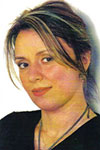Liutsko, L.N.

PhD. (Doctor in Personality and Behaviour)
Mira y Lopez Laboratory; Department of Personality, Assessment and Psychological Treatment; Institute of Brain Research, Cognition and Behaviour, University of Barcelona
Barcelona, Spain.
-
Traditional and innovative trends in math education in preschoolers in russia: do they fit to educational criteria?Lomonosov Psychology Journal, 2020, 3. p. 166-193read more3535
-
Relevance. There is growing interest in the market for educational applications in Russia. A significant number of these are aimed at preschoolers. Although much is known about the key features of preschoolers learning ( due to the cultural-historical approach as well ), there is still little research analyzing whether these features are taken into account in the design and methodology of mobile applications available on the market.
Objective. To analyze math apps for preschoolers from the standpoint of cultural-historical theory.
Design. We went to Google Play and AppStore with the query “mathematics for preschoolers” and selected four apps that are most popular among users and recommended by experts. We analyzed them according to the following criteria: (1) adult engagement, (2) quality of the child’s interactions with the application content, (3) types of content, (4) forms of material presentation and the correspondence of the method of number concept formation to the preschool age specifics, (5) the quality of mathematical content, that ensures the principle of continuity with the primary school curriculum.
Results. None of the apps was based on developmental learning methodology, and none used opportunities for involving an adult in a dialogue and joint activities with a child. Not all the apps considered the characteristics of the age group in their design of content and the child's interactions with the app. Only one of the apps provides continuity with the primary school curriculum.
Conclusions. Scientific knowledge and practical achievements in the field of mathematical education for preschoolers are not always reflected even in the most popular programs. Our analysis allows to draw the attention of parents, teachers, and developers to important design elements that could make an app really educational for preschool children.
Keywords: math apps; preschool education; elementary mathematical concepts; interaction with the app DOI: 10.11621/vsp.2020.03.08
-
-
Development of VR-PACE Virtual Reality Technology for Diagnosing and Training the Skill Level of Hockey PlayersLomonosov Psychology Journal, 2022, 1. p. 269-297Polikanova, I.S. , Leonov, S.V. , Yakushina, A.A. , Liutsko, L.N. , Bugriy, G.S. , Kruchinina, A.P., Chertopolokhov, V.A.read more2823
-
Relevance: in the last decade, virtual reality (VR) technologies have been actively introduced into the training process in various types of sprints. At the same time, there are studies showing the inconsistency of VR for the formation of sports skills and their transfer to real conditions. But despite this, the use of VR can be useful for practicing specific motor skills and cognitive functions, for example, anticipation.
Objective: to develop VR-PACE technology (VR Technology for training Puck hitting And HOSKE skill Effectiveness) using virtual reality aimed at diagnosing and analyzing the skill level of a hockey player, as well as their training.
Methods: within the framework of the study, a simulation virtual environment was developed that simulates a hockey field (ice arena in Sochi) and sets four difficulty levels (four blocks) depending on the speed of the puck and the distance to it. The study involved 22 people, 13 of whom were professional hockey players (Mage=20±2.5), and seven were beginners in hockey (Mage=20±1.4).
Results: it was found that professional hockey players have a significantly smaller amplitude of head vibrations during the reflection of pucks, that is, they understand the position of their body well enough during certain actions, and they do not need to observe the full trajectory of the puck. There were also significant differences in the speed of response to the presented washers in the block with the fastest speed of presentation of 2 washers. The results obtained may indicate a better formation of technical and tactical, temporal and spatial factors in professional hockey players.
Conclusions: the adequacy of the developed tools for the analysis of professional skills of hockey players was demonstrated. It was also shown that the skill level of a hockey player is determined by the formation of a set of parameters, including spatial, temporal, technical and tactical abilities. This is manifested in the automation of a number of skills, as well as the optimization of motor responses: 1) higher and more stable amplitude of movements over the entire observation interval and minimization of unnecessary movements; 2) higher reaction speed to more complex pucks (close to real game situations); 3) concentration of attention on significant signals, anticipation.
Keywords: VR-PACE; virtual reality; motor reaction; pose analysis; ice hockey; response to stimulus DOI: 10.11621/vsp.2022.01.12
-









